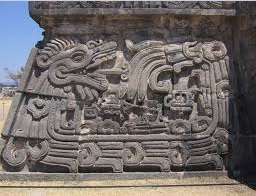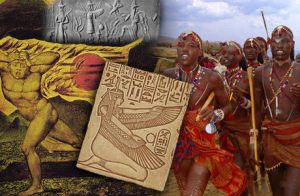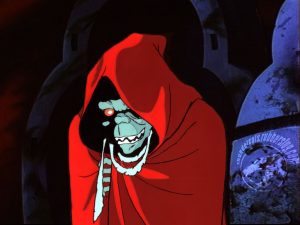The article below (in pdf) is most interesting, and it has far reaching implications. The mathematically inclined among readers are bound to love it! One however need not have to like mathematics to appreciate it. There is a section on history and on art that is equally pertinent. There are also beautiful Akan weaving designs including those on kente cloth that can be appreciated for their pure aesthetic quality.
But back to the mathematics. Can you believe that there are Fibonacci patterns and golden ratios encoded into Akan weaving patterns? The Fibonacci numbers really were not invented by Leonardo Fibonacci but were known in Ancient Kemet (Egypt) and most likely before this time. The fact that Akan weavers starting from at least the Bono-Gyaman period have encoded these numbers in their weaving patterns is very significant.
The Fibonacci numbers are a sequence of number patterns found in nature. They are often said to describe the organic process of growth of some plants, leaves, flowers etc. In modern times, some people have become fascinated with these numbers which are seen to be a part of ‘sacred geometry’.
The investigation that led me to decyphering these numbers in Akan weaving patterns began a few weeks ago (to present day 20th February 2010). I was looking at Akan patterns in Rattray’s book “Religion and Art in Ashanti” and immdiately recognized the triangular number pyramid patterns (see article below). I then realized that the patterns created by the black lines were not necessarily the same as those created by the non-black lines. As the investigation continued, I began to wonder whether there was any specific patterns in the not-so-obvious designs (i.e.those that were not in a particular geometric shape), After trying out different possibilities, I decided to write down the number sequences created by batches/blocks of black lines and the sequences created by the batches/blocks of non-black lines. This is when I started to get closer to seeing these Fibonacci numbers.
I am aware that there may be many more Akan weaving patterns that I have not analysed. The ones shown in Rattray’s books are interesting because they were taken from the Akan people and recorded during a “pre-literate” era, so these patterns must have been practiced by these people without European interference. One may conjecture that there could have been possible Arabic influence, however after looking at various cloth designs, it appears to me that those similar (and in many cases identical) to the Akan ones are from other indigenous people! How about that?! Weaving patterns I found created by the people of Fiji, the Marshall Islands, the Samoans as well as the Peruvians (Inca culture) were literally identical to their Akan counterparts. Akan step pyramid and triangular geometry art is identical to the Anasazi Native Indian people of America. Then there are several other indigenous people whose art creates geometrical designs similar enough to the Akan (see the article below for a list).
So this was an exciting investigation for me, also because it makes connections with other cultures. What could be further studied are the native algorithms used by Akan, other African and other indigenous weavers in their weaving work.
Article Contents
Introduction ……………………………………………………………………………………………………………. 3
Brief History of Weaving among the Akan people ………………………………………………………. 4
Mathematics in Akan Weaving Patterns Decoded ………………………………………………………. 5
– Triangular Numbers and Number Sequences in Akan weaving …………………………………. 5
– Summing up counting numbers ………………………………………………………………………………. 5
– Possible associations with Pascal’s Triangle …………………………………………………………… 9
Fibonacci Numbers and the Golden Ratio in Akan weaving patterns! ………………………….. 10
– Other Fibonacci number patterns in the weaving designs ………………………………………… 11
– The Golden Ratio …………………………………………………………………………………………………… 11
Geometric Shapes in Akan Weaving …………………………………………………………………………. 13
– Octahedron and Tetrahedron as 3-D version of Rhombus & Triangle ………………………….13
Possible Association with Musical Codes? ………………………………………………………………. 14
Similar Weaving Patterns among other Indigenous Peoples ……………………………………… 14
Conclusion ……………………………………………………………………………………………………………. 14
References …………………………………………………………………………………………………………….. 15
Appendix A ……………………………………………………………………………………………………………. 16
Appendix B ……………………………………………………………………………………………………………. 19




Thanks for the article. Have you checked out African Fractals by Ron Eglash?
Yes I have, Angel. I checked it out some years ago, but have gone back to see it again now that you have brought it to my attention again.